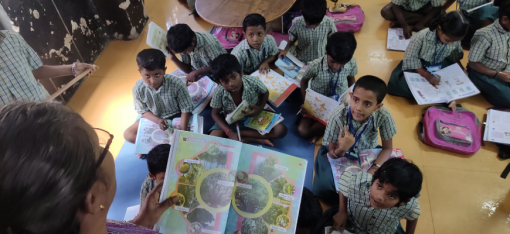
How Children Learn: Some Common Myths
There is no lack of opinions on what children should learn. This topic has been the center of discussions among policy makers, educators, administrators, students and the general public alike, with each section of society bringing in fresh perspectives. While the ‘what’ has received considerable interest, the how of children’s learning processes has stayed in the shadows, often taking shape as misconceptions and myths. Today, we’ll bust some of the most common ones.
Myth #1: Children know how to learn
In conversation with parents and teachers, it is often heard that ‘the child refuses to learn’. In truth, there is no such thing. A more plausible reason is that the child doesn’t know how. Imagine having to drive a car with the knowledge of what a steering wheel is. For example, on any given school day, it is highly likely that we hear something like this in classrooms:
‘Today we’ll be organising our thoughts in the form of mind maps. This is the structure for it. Let’s see you give it a try’.
While this is a great instruction for what is to be done, it doesn’t necessarily explain how.
Let us look at another instruction for the same purpose.
‘Today, we’ll be organising our thoughts in the form of a mind map. First, write the central theme in the center of a page of paper. Then, think of what the different categories are under this topic. For instance, if my theme is transport, then my categories would be roadways, railways, waterways and airways. I will draw them in my mind map as branches from the central theme. I will repeat this if each category has more sub-categories’.
If you, as a learner were trying to draw a mind map, which one would suit your need?
Myth #2: Children learn best in their mother tongue
The role of a child’s mother tongue in their learning has been much debated, with educators and education theorists wholeheartedly endorsing its benefits. While this is not completely untrue, this statement does not present the complete picture. A child learns best in the language to which they are most exposed through interactions with adults and peers. Children whose families have relocated to areas where the local language is not their mother tongue become more fluent in the local language than their mother tongue within a year or two, to a point that parents have to be especially conscious of speaking only in the mother tongue at home with the child so the child does not lose her connection with her roots. Ask any NRI parent.
Myth #3: Memorisation and rote learning are always ineffective
First, we must make a distinction between memorisation and rote learning. Memorisation is being able to recall 2 by 2 equals 4 without the need to calculate it each time, but knowing how one gets 4 when 2 is multiplied by 2. Rote learning is being able to recall the product as 4 but not being able to explain the process by which the product was arrived at. Much attention has been paid to the use of rote learning in schools and its inefficiency in cultivating a wholesome learning atmosphere. Many of us may even consider memorisation as an ineffective way of learning. While it is true that meaningful and logical learning is deeper, these higher levels of cognition require a learner to have some foundational knowledge, which is developed effectively through retaining some facts in memory and using them appropriately.
Myth #4: Writing equals language acquisition
In the Indian context, a disproportionate amount of time and effort has been devoted to developing the mechanics of writing in young learners. If you were to recall the type of homework you were given in a language class or the nature of the practice that was associated with it, more often than not, you would recall putting pen to paper. The assumption behind these tasks is that, if a learner can produce a written piece in a language, they have acquired the language in its entirety. Educators’ decisions and actions stemming from this assumption have resulted in a large section of the student population being proficient in the mechanism of writing without understanding the fundamentals of the language. In order for learners to be able to generate ideas and original thought in a given language, they should be able to speak it well, which means they must possess a rich vocabulary in that language first. However, unless learners are provided an immersive environment where they listen to the language frequently, their listening skills, and in turn their speaking skills will remain stunted, leading an extremely poor level of language acquisition
The ‘what’ of a child’s learning process is contextual and subjective. As parents, teachers and policymakers it is necessary to further discussions and equip ourselves with knowledge on how a child is learning. Although this may require some unlearning on our part, understanding this paradigm of education is fundamental to improving the quality and standards of primary grade instruction.
